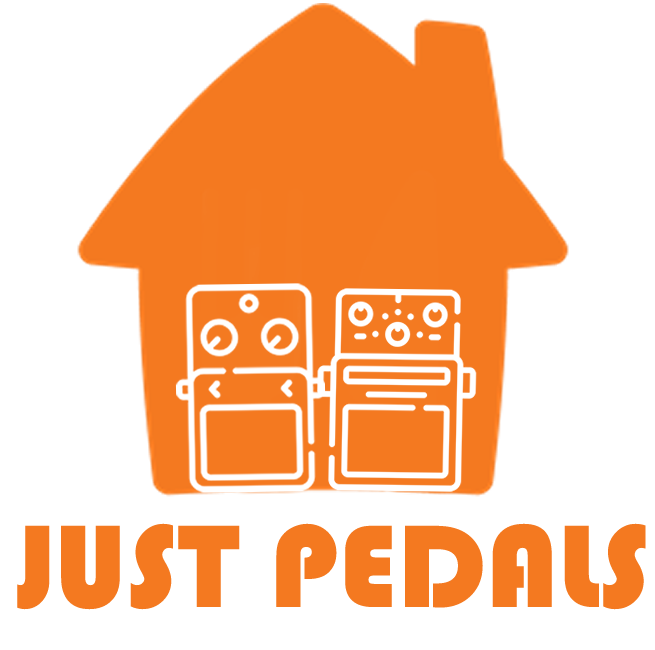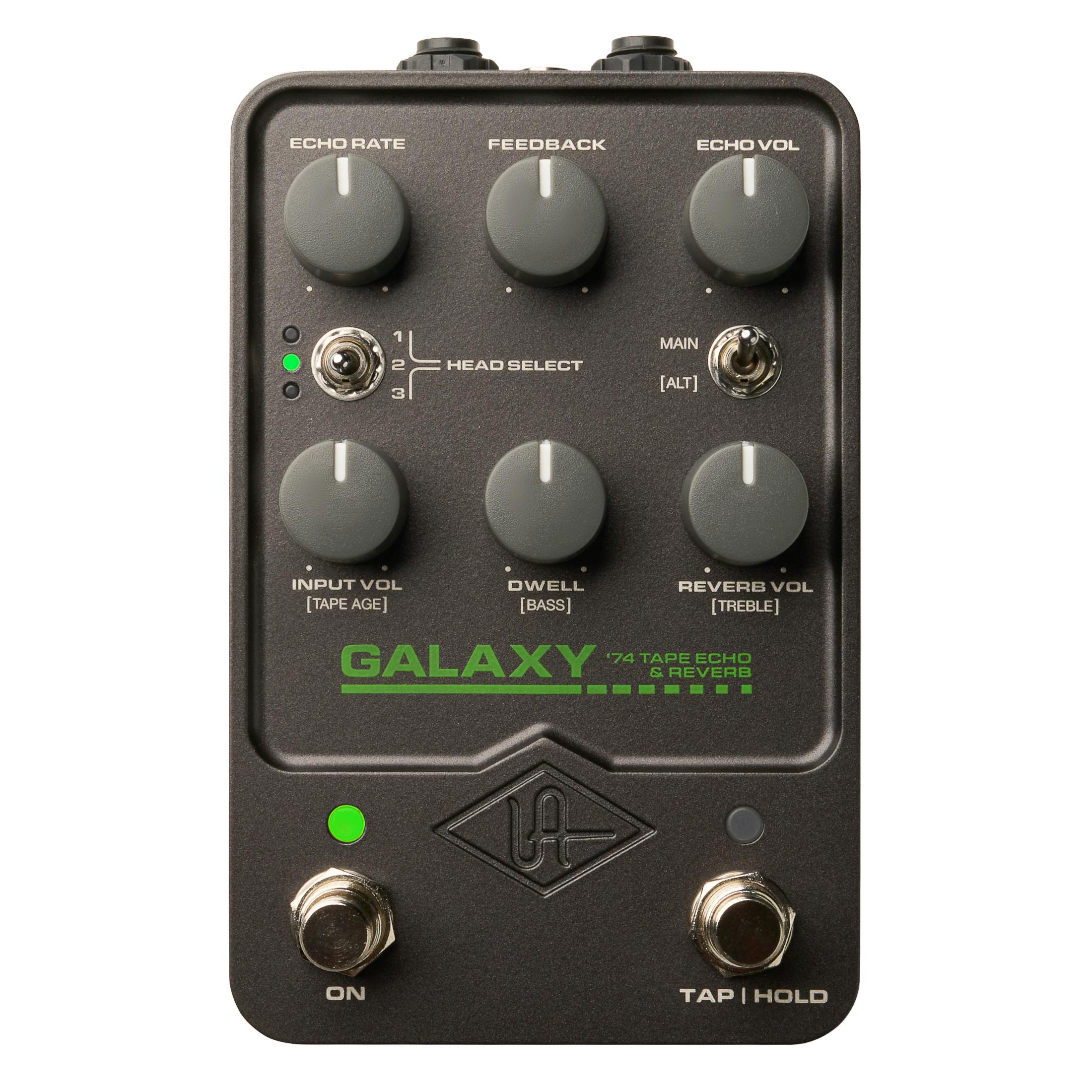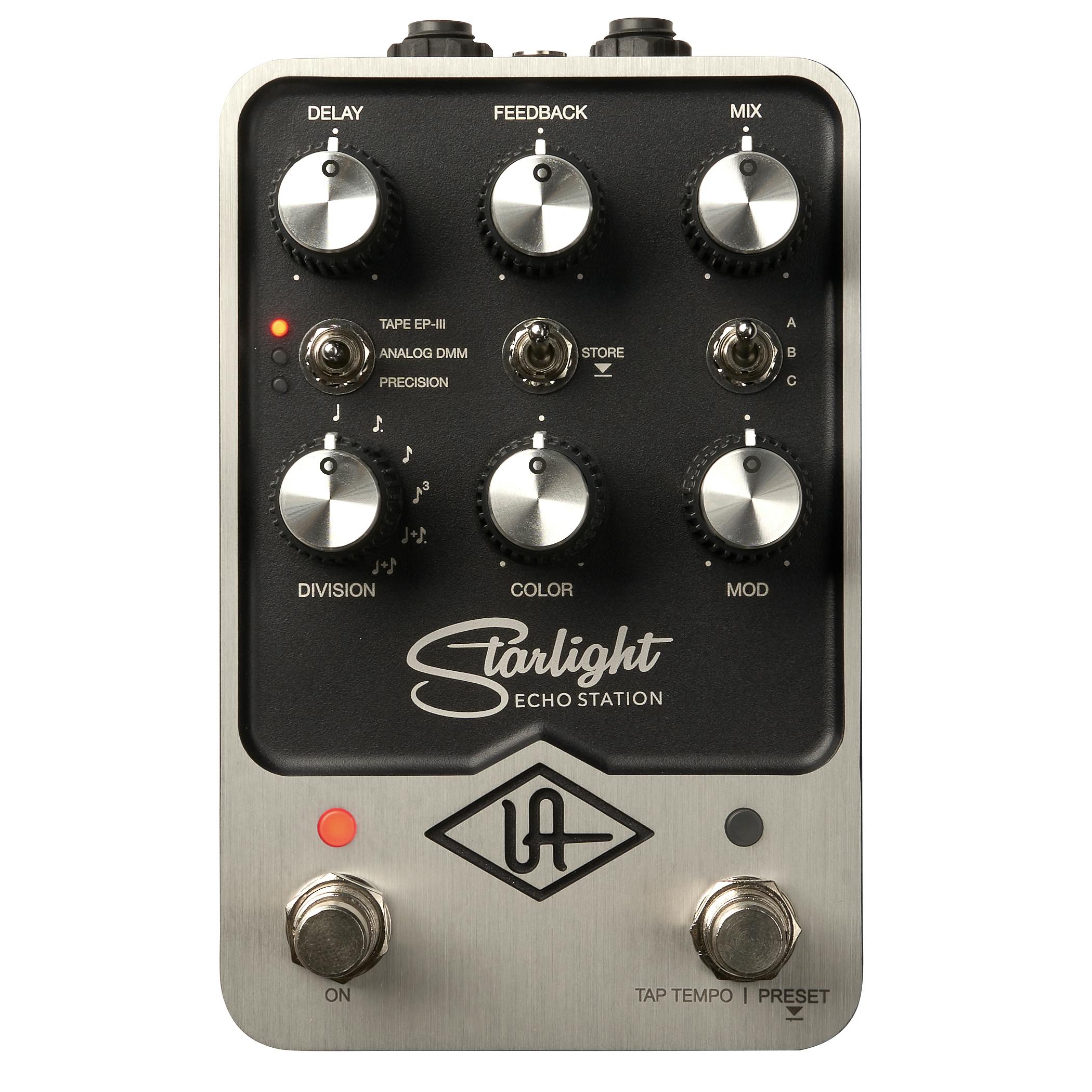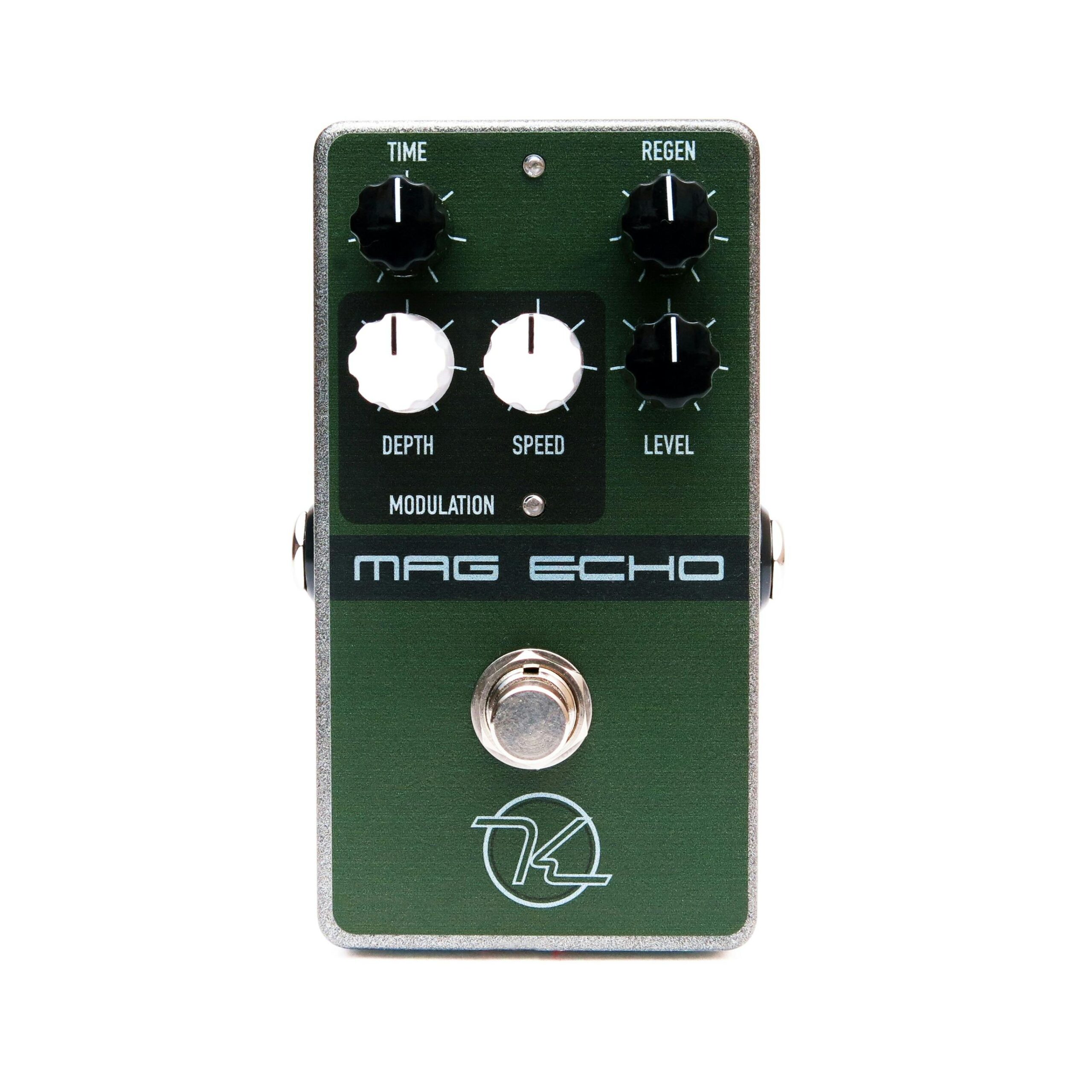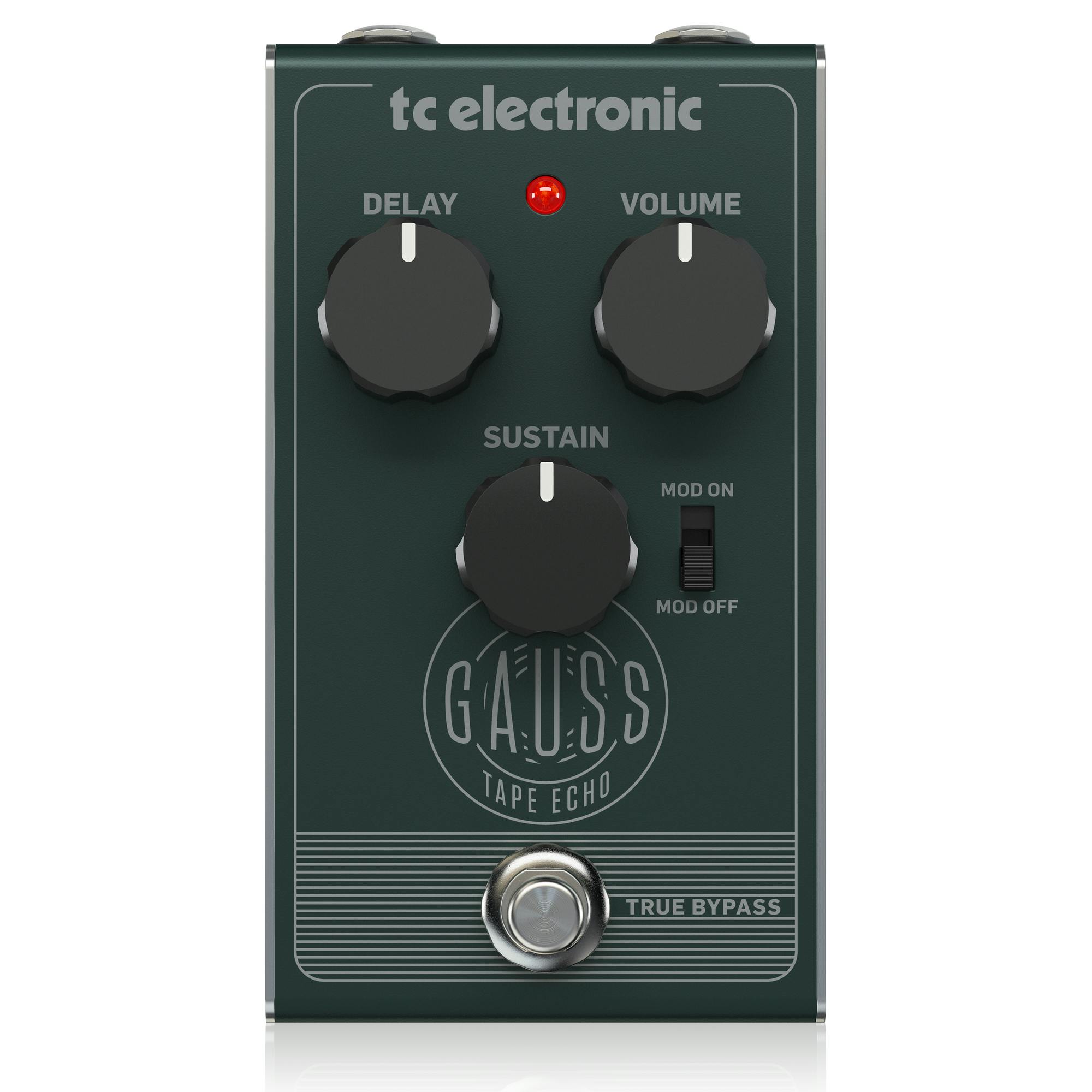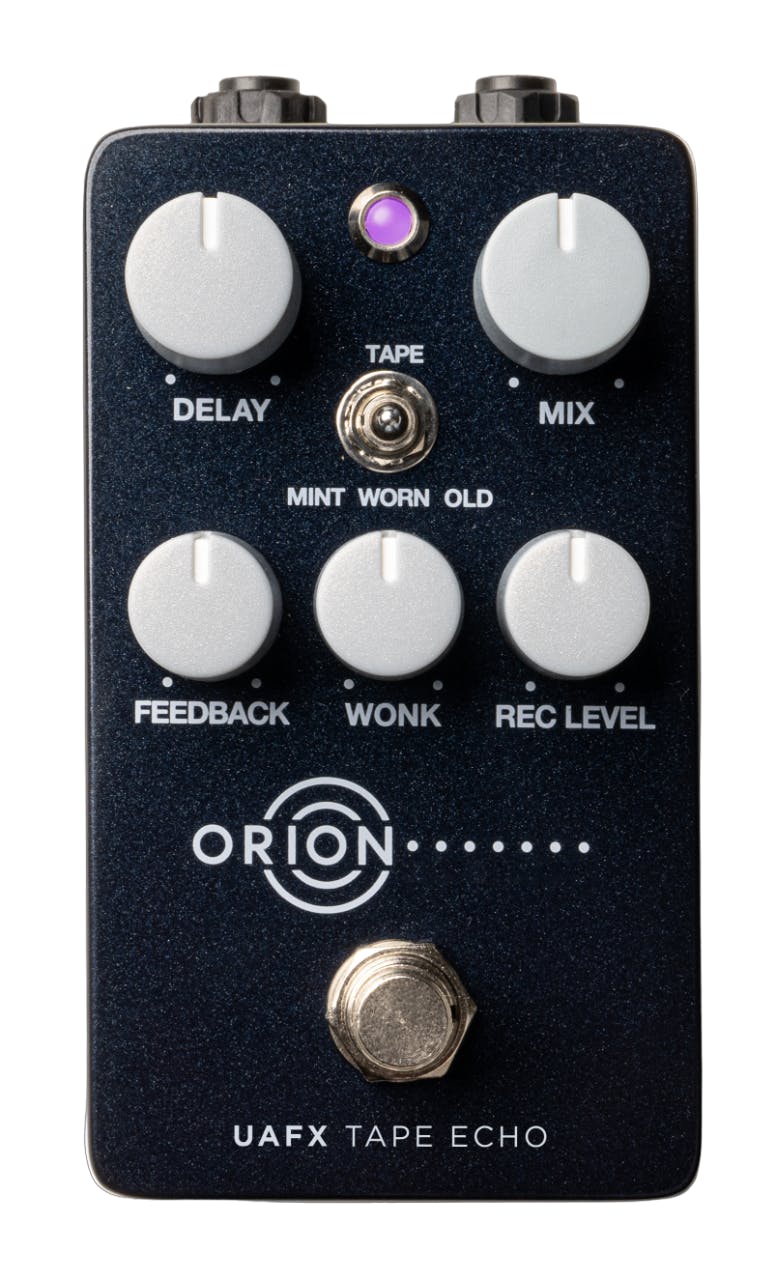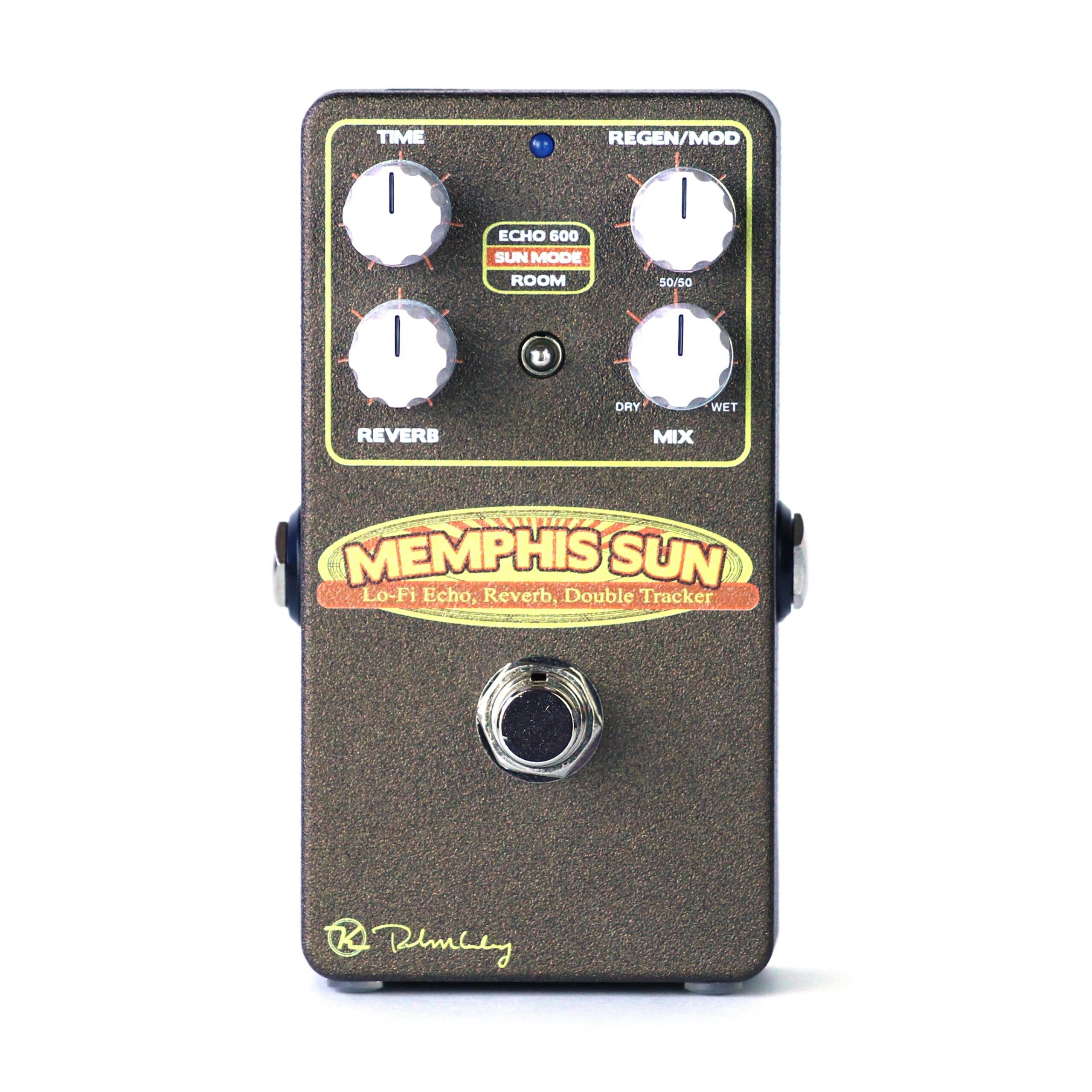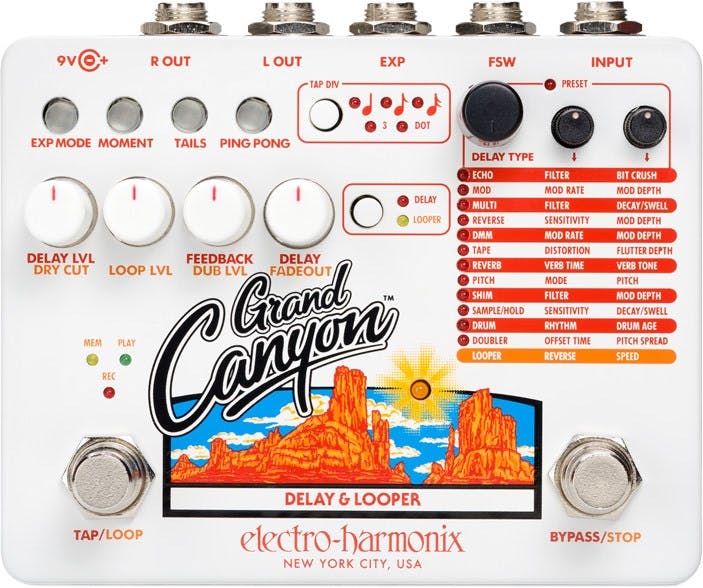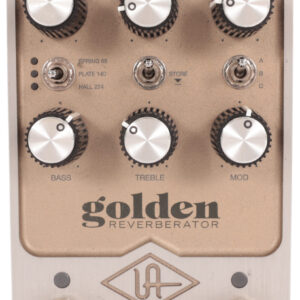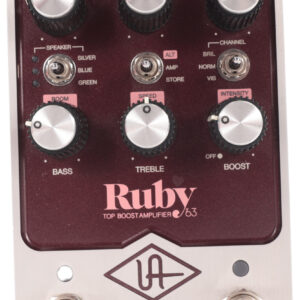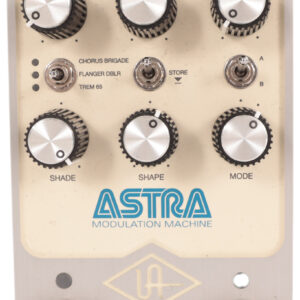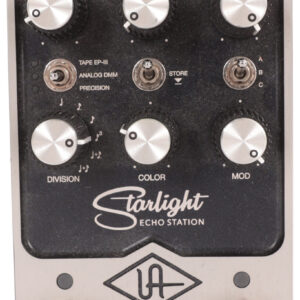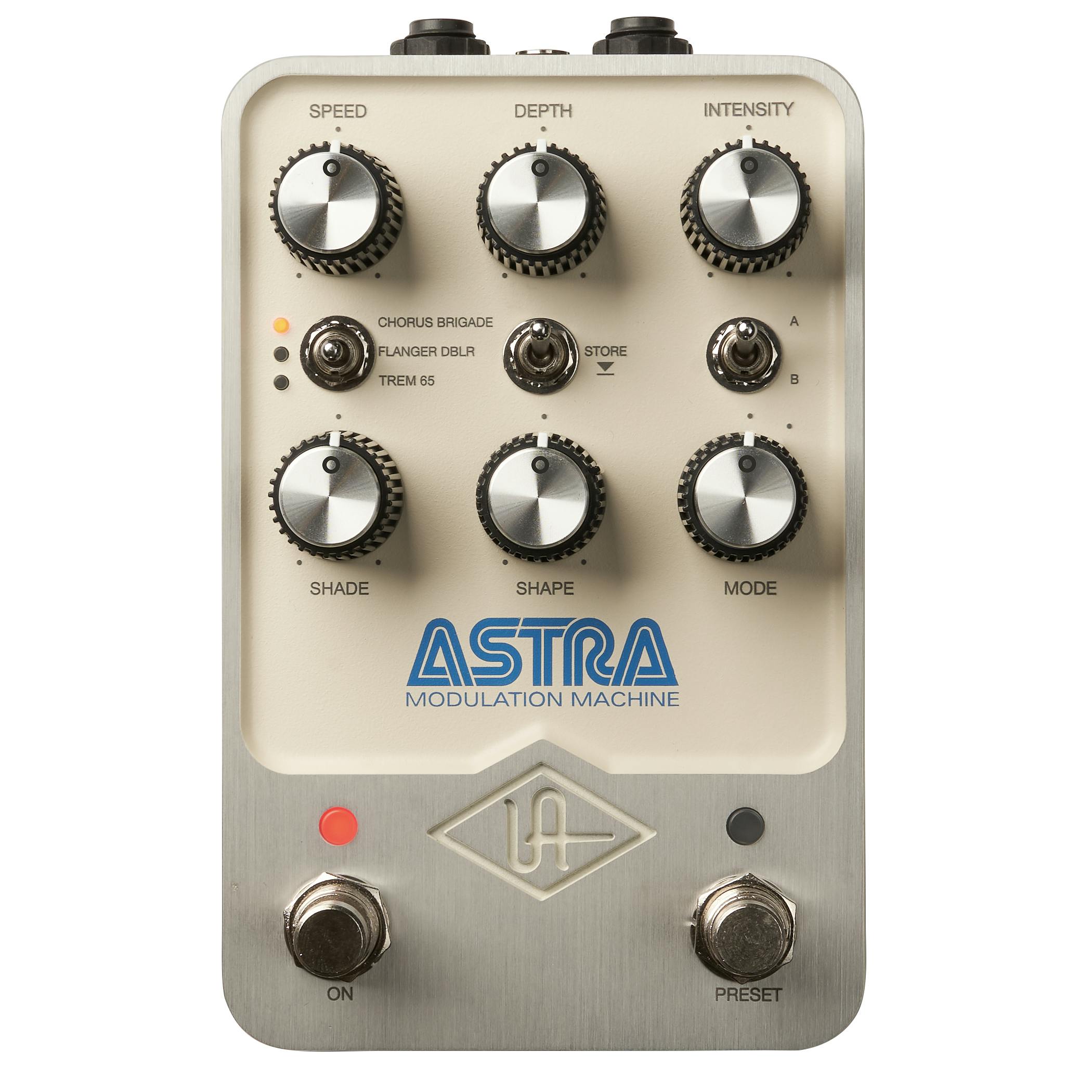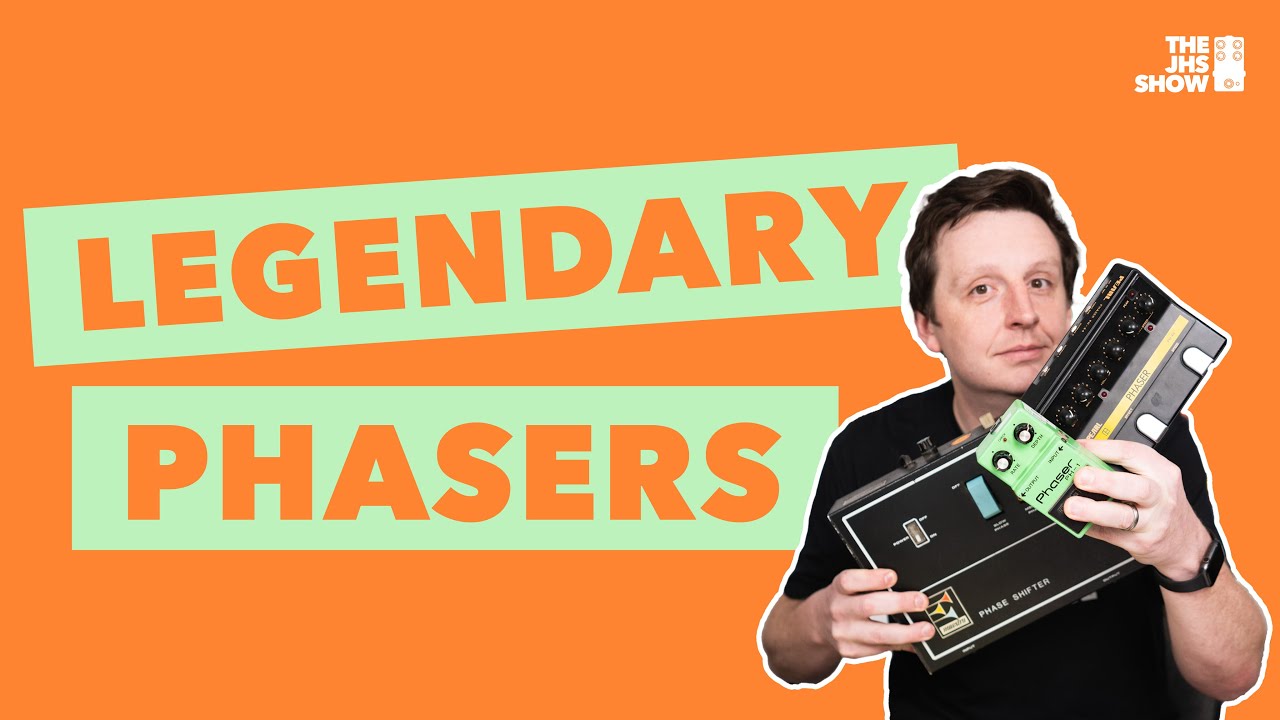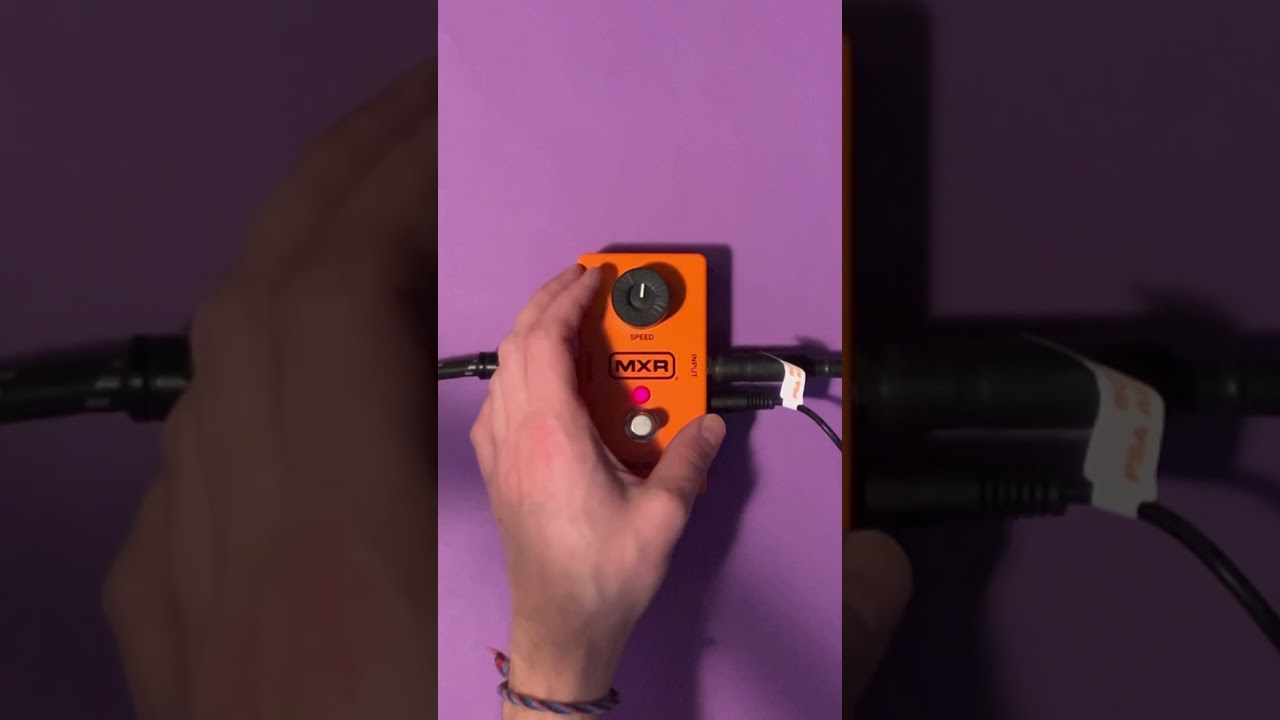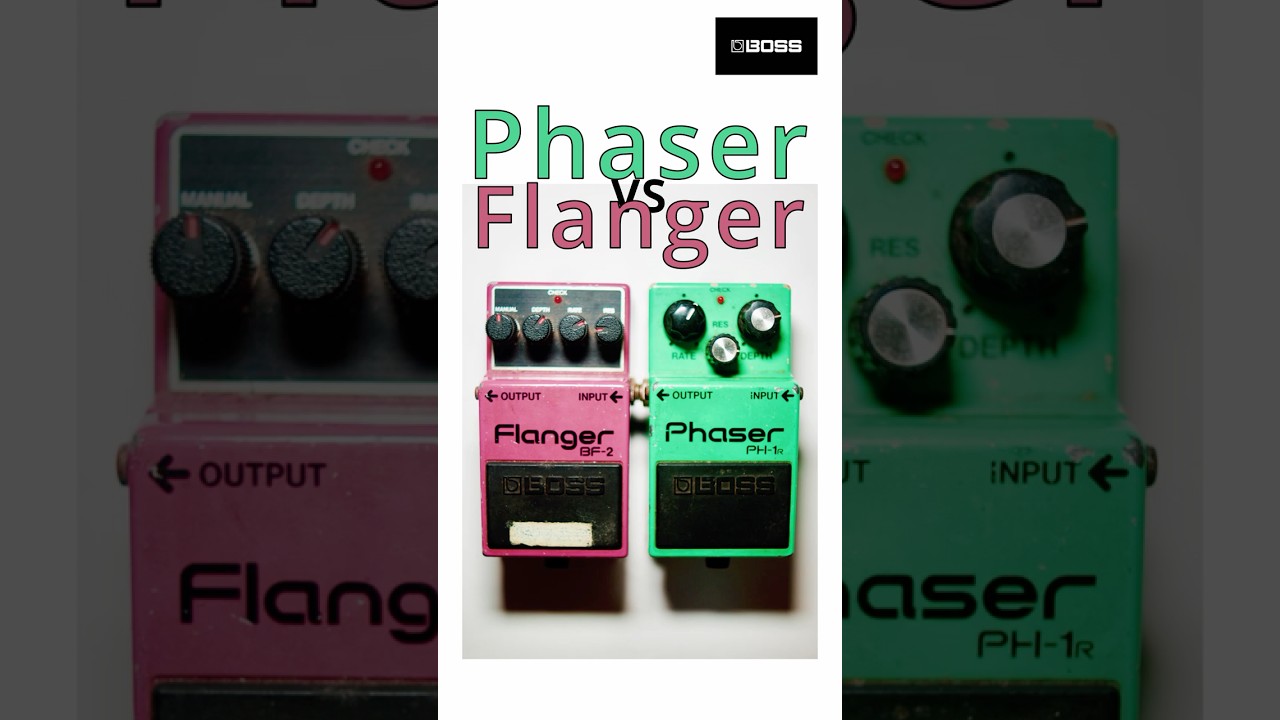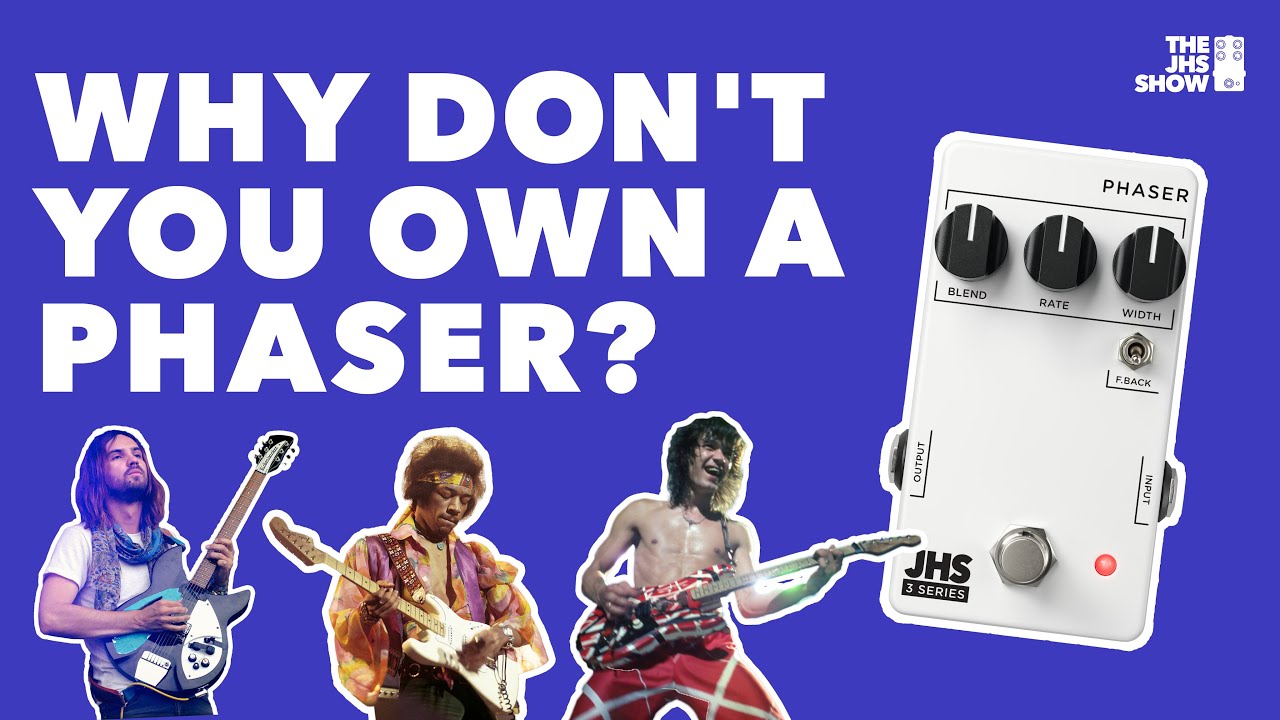Description
The Universal Audio UAFX Galaxy ’74 Tape Echo Delay & Reverb Pedal is currently retailing at £325 and it is in stock. Available to be delivered to you by post direct (some charge may apply).The team at Just Pedals think that Universal Audio nailed it with the Universal Audio UAFX Galaxy ’74 Tape Echo Delay & Reverb Pedal. Universal Audio UAFX Galaxy ’74 Tape Echo Delay & Reverb Pedal
We have new and used Universal Audio musical equipment available on our website for fast direct delivery from sellers across the UK & Europe.
Universal Audio (UA) is a leading manufacturer of professional audio recording hardware and software, renowned for their high-quality audio interfaces, preamps, and analog modeling plugins. Founded in 1958 by Bill Putnam Sr., UA has a rich heritage in recording technology, with a legacy that includes designing classic studio gear used on countless hit records. Today, Universal Audio offers a range of products, including their acclaimed Apollo series audio interfaces, featuring real-time analog processing and high-resolution audio conversion, as well as their UAD-2 DSP accelerator cards and plugins, which faithfully model vintage analog hardware. With a commitment to preserving the analog sound of yesteryear while embracing modern digital technology, Universal Audio continues to be a trusted name among audio professionals, musicians, and producers seeking premium-quality recording solutions.
Just Pedals is a new Guitar Effect Pedals Marketplace – We feature new and used Guitar Effect pedals from different sellers, to purchase online from the UK.
A pedal is an electronic device that alters the sound of an electric guitar by applying various effects. Pedals are typically connected in a series between the guitar and amplifier, allowing guitarists to switch effects on and off with their feet while playing.
This enables musicians to quickly and easily change their sound, adding versatility and creativity to their performances.
Pedals are essential tools in many musical genres, including rock, blues, jazz, and metal, allowing artists to craft distinctive and dynamic soundscapes.
Once you buy one, you can’t stop and then you have to sell them and buy more.
Reverb simulates the natural echoes and reflections of sound in different spaces, adding depth and atmosphere to a guitar’s tone. It can range from short, subtle room reverbs to large, ambient cathedral-like spaces. Common types of reverb include spring reverb (found in vintage amplifiers), plate reverb (a smooth studio-style effect), and shimmer reverb (which adds ethereal, harmonised overtones). Reverb is essential in many genres, from surf rock and blues to shoegaze and ambient music. Popular reverb pedals include the Boss RV-6, Electro-Harmonix Holy Grail, and Strymon BigSky, offering everything from classic warmth to expansive soundscapes.
A tape pedal simulates the sound and characteristics of vintage tape delay machines, adding a warm, organic, and sometimes slightly warbled echo effect to a musician’s signal. Tape delay pedals recreate the tonal qualities of early analog delay systems, which used magnetic tape to record and repeat the audio signal. The result is often a rich, natural delay with a distinct, vintage character that adds a sense of movement and imperfection to the sound.
Tape delay pedals typically offer controls for delay time, feedback, and modulation, allowing musicians to dial in everything from subtle echoes to rhythmic repeats with tape-like saturation. Popular brands like Strymon and Electro-Harmonix produce tape delay pedals that capture the essence of classic tape machines while offering modern features, making them ideal for players seeking that retro, nostalgic delay tone in their setup.
Just the latest videos
Just related products
35% Off £327.00 £213.67
The most authentic emulation of the classic mid-’70s analog Japanese ambience device Full modeling of the classic multi-head tape delay mechanism Exacting emulation of original hardware's spring reverb Definitive capture of iconic analog preamp secti…
read more
57% Off £206.00 £88.16
Authentic emulation of a vintage Maestro EP-III tape echo in a compact stompbox Perfectly captured analog preamp for fat, boosted tones and effects Selectable Mint, Worn, and Old tape machines for distinct color and texture Wonk control for modulated…
read more
38% Off £189.00 £116.42
Authentic emulation of a vintage digital studio hardware, in a compact stompbox Bit-for-bit emulations of iconic Room, Small Hall, or Large Hall programs Vintage-correct Bass, Mid, and Treble decay lines Mod control for lush, grainy "early-digital" t…
read more
24% Off £222.00 £169.00
Authentic sound and behavior of the legendary Roland RE-201 Space Echo in a BOSS compact pedal. Classic multi-head tape echo sound with expanded delay time. Original three-head configuration and 11 different sound combinations. Vintage RE-201 spring …
read more
38% Off £189.00 £117.08
Authentic emulations of three vintage studio plate reverbs used on countless classic albums Selectable Vintage Bright, Vintage Dark, and Modern Full plate settings for endless reverb textures Mod, Pre-delay, EQ, and slow/fast Rate controls for simple…
read more
